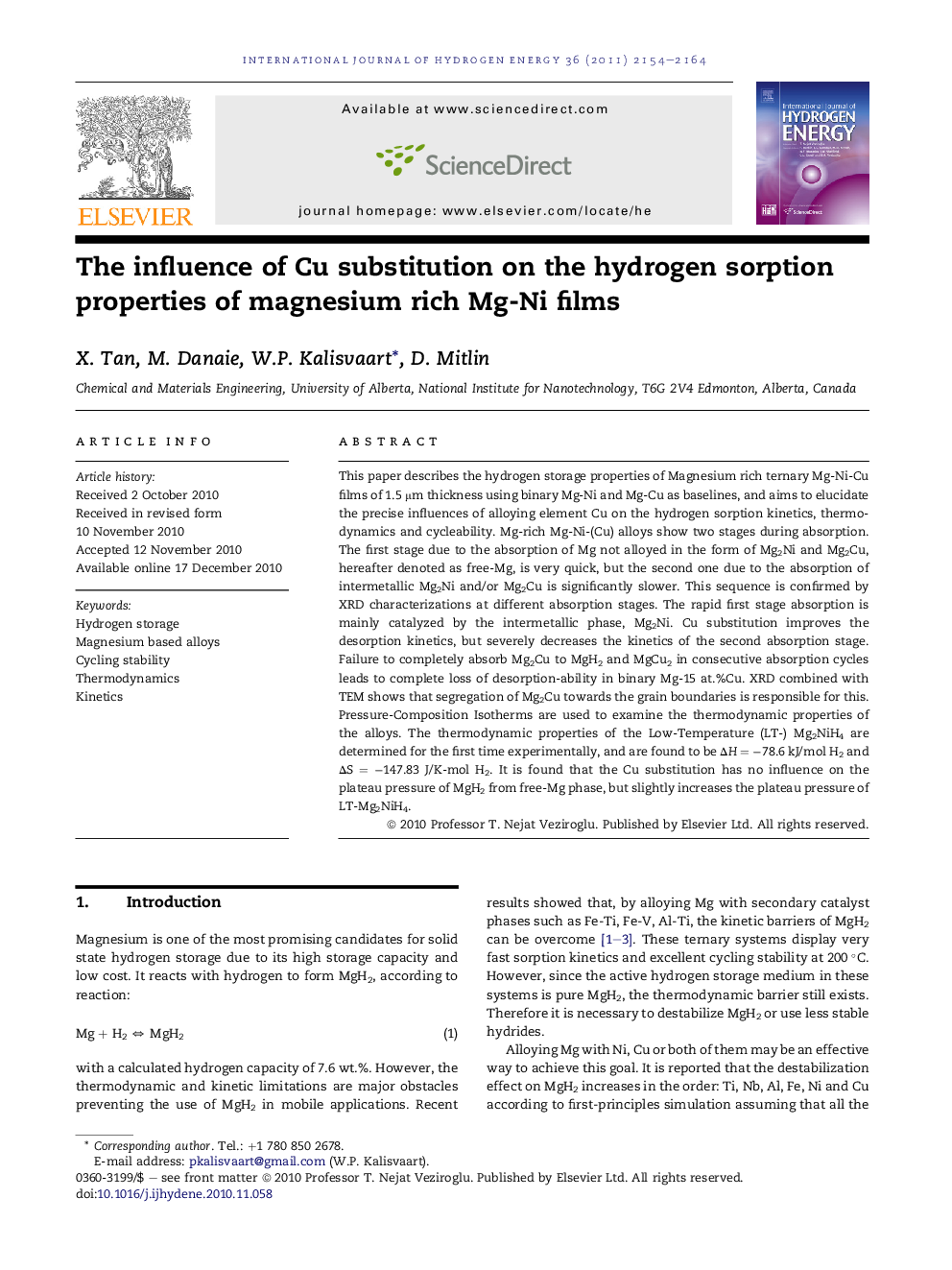| Article ID | Journal | Published Year | Pages | File Type |
|---|---|---|---|---|
| 7724413 | International Journal of Hydrogen Energy | 2011 | 11 Pages |
Abstract
This paper describes the hydrogen storage properties of Magnesium rich ternary Mg-Ni-Cu films of 1.5 μm thickness using binary Mg-Ni and Mg-Cu as baselines, and aims to elucidate the precise influences of alloying element Cu on the hydrogen sorption kinetics, thermodynamics and cycleability. Mg-rich Mg-Ni-(Cu) alloys show two stages during absorption. The first stage due to the absorption of Mg not alloyed in the form of Mg2Ni and Mg2Cu, hereafter denoted as free-Mg, is very quick, but the second one due to the absorption of intermetallic Mg2Ni and/or Mg2Cu is significantly slower. This sequence is confirmed by XRD characterizations at different absorption stages. The rapid first stage absorption is mainly catalyzed by the intermetallic phase, Mg2Ni. Cu substitution improves the desorption kinetics, but severely decreases the kinetics of the second absorption stage. Failure to completely absorb Mg2Cu to MgH2 and MgCu2 in consecutive absorption cycles leads to complete loss of desorption-ability in binary Mg-15 at.%Cu. XRD combined with TEM shows that segregation of Mg2Cu towards the grain boundaries is responsible for this. Pressure-Composition Isotherms are used to examine the thermodynamic properties of the alloys. The thermodynamic properties of the Low-Temperature (LT-) Mg2NiH4 are determined for the first time experimentally, and are found to be ÎH = â78.6 kJ/mol H2 and ÎS = â147.83 J/K-mol H2. It is found that the Cu substitution has no influence on the plateau pressure of MgH2 from free-Mg phase, but slightly increases the plateau pressure of LT-Mg2NiH4.
Related Topics
Physical Sciences and Engineering
Chemistry
Electrochemistry
Authors
X. Tan, M. Danaie, W.P. Kalisvaart, D. Mitlin,
